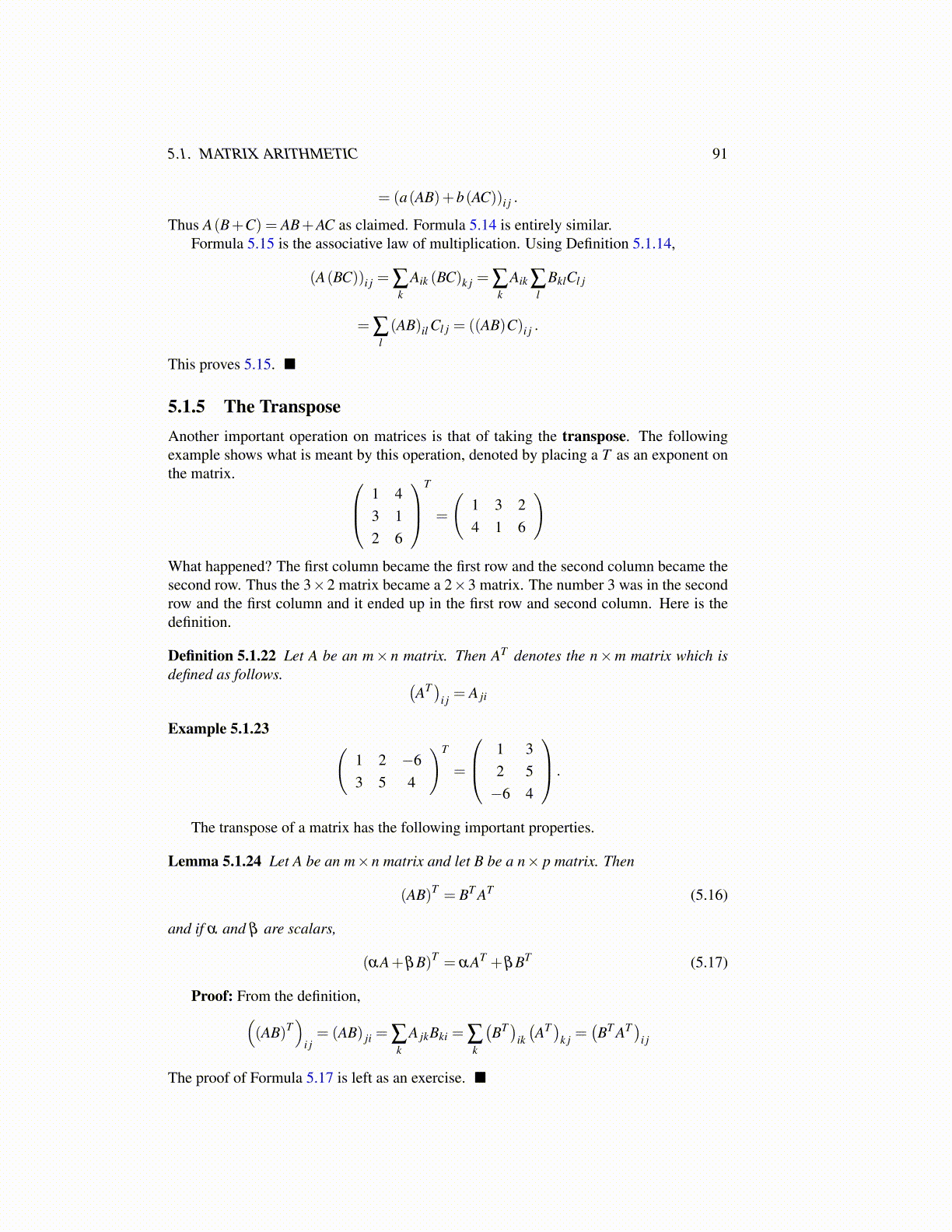
5.1. MATRIX ARITHMETIC 91
= (a(AB)+b(AC))i j .
Thus A(B+C) = AB+AC as claimed. Formula 5.14 is entirely similar.Formula 5.15 is the associative law of multiplication. Using Definition 5.1.14,
(A(BC))i j = ∑k
Aik (BC)k j = ∑k
Aik ∑l
BklCl j
= ∑l(AB)il Cl j = ((AB)C)i j .
This proves 5.15. ■
5.1.5 The TransposeAnother important operation on matrices is that of taking the transpose. The followingexample shows what is meant by this operation, denoted by placing a T as an exponent onthe matrix. 1 4
3 12 6
T
=
(1 3 24 1 6
)
What happened? The first column became the first row and the second column became thesecond row. Thus the 3×2 matrix became a 2×3 matrix. The number 3 was in the secondrow and the first column and it ended up in the first row and second column. Here is thedefinition.
Definition 5.1.22 Let A be an m× n matrix. Then AT denotes the n×m matrix which isdefined as follows. (
AT )i j = A ji
Example 5.1.23 (1 2 −63 5 4
)T
=
1 32 5−6 4
.
The transpose of a matrix has the following important properties.
Lemma 5.1.24 Let A be an m×n matrix and let B be a n× p matrix. Then
(AB)T = BT AT (5.16)
and if α and β are scalars,
(αA+βB)T = αAT +βBT (5.17)
Proof: From the definition,((AB)T
)i j= (AB) ji = ∑
kA jkBki = ∑
k
(BT )
ik
(AT )
k j =(BT AT )
i j
The proof of Formula 5.17 is left as an exercise. ■